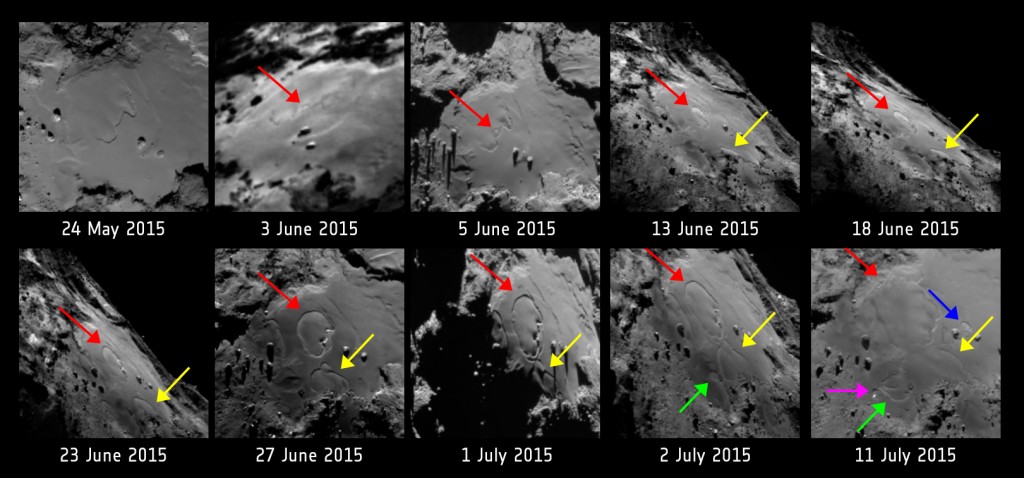
Rosetta’s last week at the comet
Squeezing out unique scientific observations until the very end, Rosetta’s thrilling mission will culminate with a descent on 30 September towards a region of active pits on the comet’s ‘head’. The region, known as Ma’at, lies on the smaller of the 2 lobes of Comet 67P/Churyumov–Gerasimenko. It is home to several active pits more than 100 m in diameter and 50–60 m in depth – where a number of the comet’s dust jets originate. The walls of the pits also exhibit intriguing metre-sized lumpy structures called ‘goosebumps’, which scientists believe could be the signatures of early ‘cometesimals’ that assembled to create the comet in the early phases of Solar System formation.
Rosetta will get its closest look yet at these fascinating structures on 30 Se...
Read More








Recent Comments